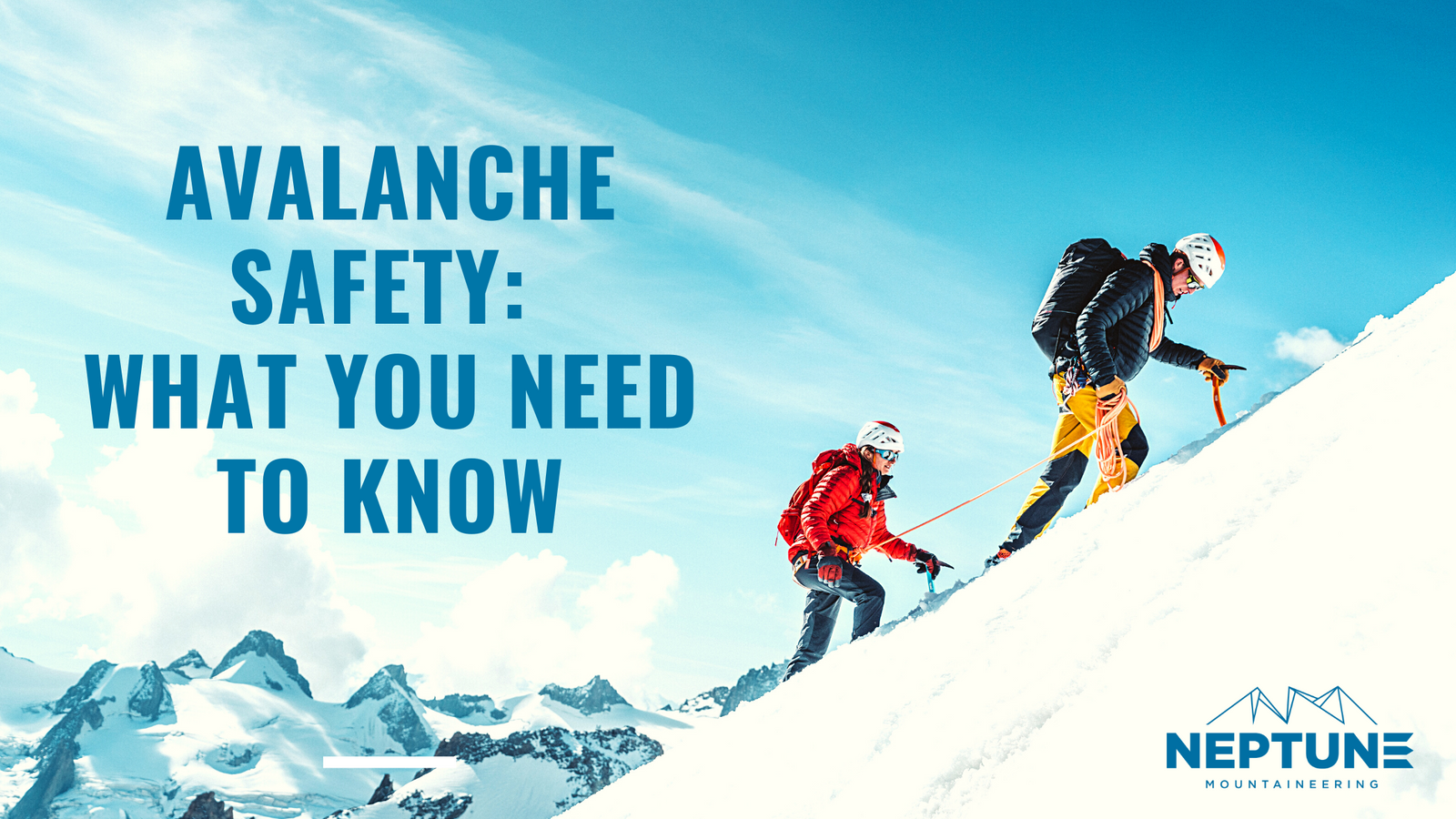
So, the outdoors has been your escape for the crazy year that was 2020, and now you're hoping to find ways to continue getting outside during the winter. Awesome! We hope to see you out there! But before you travel into the snowy mountains, you should know how to assess and avoid avalanche terrain.
Who Needs Avalanche Safety Skills
Anyone who is travelling in snow, whether by foot, snowshoes, skis, snowboards, or snowmobiles needs to understand how to avoid danger. That even includes ice climbers, who can be exposed to snowy slopes above them.
It is also worth noting that relying on the knowledge and decision-making of someone else in your group is not enough. This is a common pitfall, known as "expert halo."
Where to Start

The free avalanche awareness program Know Before You Go offers five simple steps for minimizing risk in the backcountry.
- Get the Gear
- Get the Training
- Get the Forecast
- Get the Picture
- Get Out of Harm's Way
1. Get the Gear

If you're going to be travelling through avalanche terrain, always carry a beacon, probe, and shovel to find a partner and to be found.
Beacon - A beacon, or transceiver, is a device worn on the body that transmits a radio signal used to pinpoint buried victims. All beacons use the same frequency, so you do not need to use the same brand as your companions. The best beacon is the one you know how to use! Check your batteries before each use, keep your beacon away from other electronics to avoid interference, and do a partner check at the trailhead to ensure beacons work in both search and send modes before you head out.
Probe - Once a victim has been located using a beacon, a probe is driven into the snow to determine their precise location and how deep they are buried.
Shovel - You want a backcountry-specific shovel for quickly moving several feet of snow to retrieve a buried victim. Shovels should be stored inside your pack, so as not to become separated from you in case you are caught in an avalanche.
>>Shop All Avalanche Safety Equipment>>
2. Get the Training

Avalanche safety equipment only works if you know how to use it! Moreover, the goal is to avoid triggering an avalanche altogether. Make sure you have the proper training to identify avalanche terrain, to make smart decisions, and to perform a rescue.
There are lots of options including:
Free Avalanche Awareness Courses – Colorado Mountain School, Know Before You Go, and Friends of Berthoud Pass all offer free avalanche awareness programs. The is a great place to become aware of the hazards of backcountry travel.
AIARE Courses – AIARE courses are offered by a variety of guide services and organizations, whose curriculum meet the standards of the American Institute for Avalanche Research and Education (AIARE). The typically introductory course is AIARE 1, a three-day, 24-hour introductory course to learn the basics of hazard management. Once you have completed AIARE 1, you may decide to continue your education with Avalanche Rescue or AIARE 2.
Sign up for AIARE 1 with Colorado Mountain School
3. Get the Forecast

Before you head out, visit Colorado Avalanche Information Center (or avalanche.org to find your local center) to get the forecast. You'll want to understand the types of avalanches most likely to occur the day you go out, where they are most likely to occur, and how to avoid them. Make a plan with your companions based on skill, experience, terrain, and the forecast.
4. Get the Picture

Once travelling in the snow, evaluate if the conditions on the ground match the forecast. Note wind, snowfall, and temperature. Check for signs of recent avalanche activity, wind deposits, or cracks in the snow. Be aware of not only the slope you are on, but adjacent slopes and areas above you.
5. Get Out of Harm’s Way

Cross or ride suspect slopes one at a time, and do not stop in or beneath avalanche terrain. Speak up when you have concerns and listen to your partners when they share their observations as well.
While the dangers of the mountains deserve a healthy amount of respect, it is absolutely possible to enjoy snowy terrain safely. Just make sure to Know Before You Go!
Related Links

